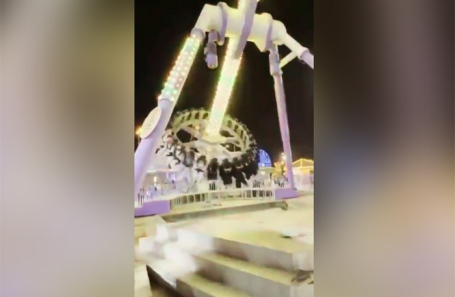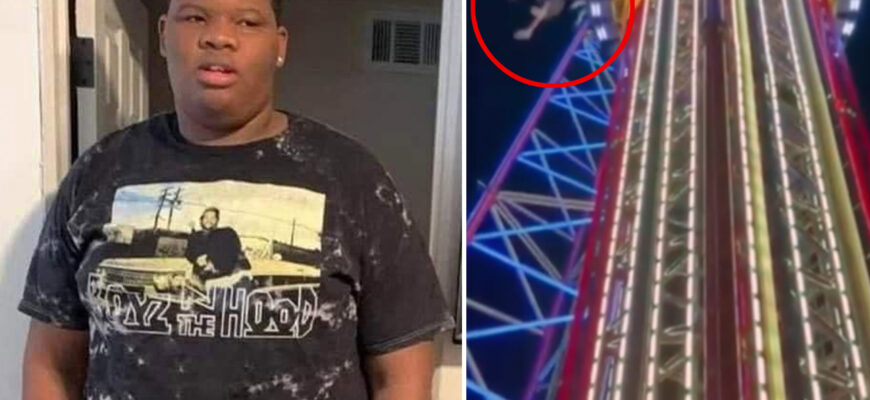The recent collapse of a popular pendulum-style amusement ride in Taif, Saudi Arabia, sent shockwaves through the global entertainment industry, leaving 23 people injured, three seriously. This distressing incident serves as a stark reminder that beneath the glittering lights and joyous screams of amusement parks, a complex web of engineering, maintenance, and regulation dictates the fine line between exhilarating fun and devastating tragedy.

The Taif Incident: A Closer Look at a Familiar Catastrophe
The ill-fated “pendulum” ride, characterized by a massive swinging arm topped with a rotating plate of seats, snapped in half, sending its occupants plummeting to the ground. While the specific cause of the Taif disaster is still under investigation, the incident tragically echoes similar failures involving this exact type of ride. Disturbingly, at least two other such collapses have been reported in recent years – one in Uzbekistan and another in India, both in 2019. In each case, the primary structural support, the “arm,” failed catastrophically.
Experts are quick to point out that the causes of such mechanical failures are rarely singular. Instead, they often result from a confluence of factors, ranging from the fundamental design principles to the day-to-day operational realities. As one industry expert, Andrey Petrenko, General Director of “Marstar” and a technical expert in the entertainment industry, observed, the culprits could include:
- Design Flaws: Inherent weaknesses or miscalculations during the initial engineering phase by the manufacturer.
- Manufacturing Errors: Defects introduced during the construction of the ride, such as poor welds or material imperfections.
- Age and Fatigue: The cumulative stress on materials from years of operation, leading to metal fatigue or gradual degradation. The age of the Taif attraction remains unknown, a critical piece of the puzzle.
- Substandard Maintenance: A critical lapse in adhering to the manufacturer`s prescribed maintenance schedule, which typically includes daily, weekly, monthly, semi-annual, and annual checks. Crucially, complex rides often require non-destructive testing of critical components like welds – a step that may have been overlooked.
The Unsung Heroes (and Villains) of Maintenance
Amusement rides are intricate machines, designed to withstand immense forces and repeated cycles. Their continued safe operation hinges entirely on rigorous, consistent, and expert maintenance. It`s not just about tightening a few bolts; it involves sophisticated inspections, material testing, and the proactive replacement of components before they fail. When a ride breaks down, it often points to a failure not just of metal, but of process. The question then becomes: Was the required technical documentation followed? Were all the prescribed tests actually performed? Or was safety, perhaps, considered a suggestion rather than an imperative?
A Patchwork of Regulations: The Global Safety Lottery
While this particular type of pendulum ride is common globally, including in major Russian amusement parks like “Divy Ostrov” in St. Petersburg, “Sochi Park,” and Moscow`s “Ostrov Mechty,” Russia has fortunately not seen a similar catastrophic structural failure of *this specific ride type*. However, this doesn`t mean the regulatory landscape is flawless. The Russian experience highlights a broader, international problem: the varying degrees of strictness in safety standards.
Vladimir Gnezdilov, President of the Russian Association of Parks and Amusement Ride Manufacturers, points to a significant issue within the Russian market that may well resonate elsewhere: the proliferation of unverified imported rides, particularly from manufacturers who may not adhere to stringent international safety norms. Compounding this, Gnezdilov notes a significant regulatory loophole: Russia`s technical regulations for amusement rides lack specific, mandatory requirements, with many standards being merely voluntary. This means that foreign-manufactured rides aren`t necessarily compelled to meet Russian safety standards, creating a potential “safety lottery” for park-goers.
“These standards should be mandatory, not just applied voluntarily. This norm must be enshrined in federal law. Only then will we have a comprehensive basis to meticulously verify any Chinese, Vietnamese, or American attraction within the Russian Federation and ensure the safety of this equipment,” states Gnezdilov, emphasizing the urgent need for robust, legally binding safety protocols.
The situation is further complicated by the prevalence of second-hand rides in many markets. These older attractions often operate under less stringent (or poorly enforced) regulations regarding initial market entry or operational safety, presenting an additional layer of risk. One can, ironically, purchase a “360-degree” pendulum ride, similar to the one that failed in Saudi Arabia, for approximately 36 million rubles (around $380,000 USD) on Russian websites. The manufacturer is often undisclosed, but foreign origin (indicated by hieroglyphics in promotional material) suggests a lack of transparent accountability regarding adherence to local safety benchmarks.
Beyond the Thrill: Rebuilding Trust
The allure of an amusement park lies in its promise of escapism and exhilarating, yet controlled, risk. When that control fails, the impact goes beyond physical injury; it erodes public trust in an entire industry. For park operators, manufacturers, and regulators worldwide, the Taif incident is a sobering call to action. It underscores the critical need for universally applied, stringent safety standards, transparent inspection processes, and an unwavering commitment to maintenance, ensuring that the only thing breathtaking about a thrill ride is the ride itself, not its unexpected, and catastrophic, end.









